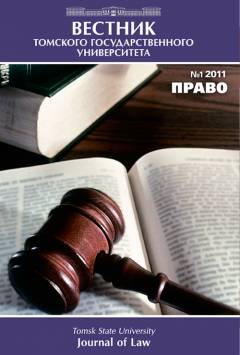The principle of admissibility of impact of economic and other activity on the environment: questions of the theory and practice
According to one of legal axioms, the principles of the right are a kernel of any branch of the right, define the main tendencies of its development, and can be used by courts for completion of gaps in the right. Completely agreeing with such approach, it is necessary to add however that for effective action of system of the principles they should not duplicate each other and not contain uncertainty elements in the contents. Unfortunately, Art. 3 of the Federal law "About Protection of the Surrounding Environment" can be a bright example of how the principles of the right duplicate each other, causing a number of questions to developers of this law. The category "admissibility" used in the studied principle has interindustry character, and is used at a formulation of the basic branch and interindustry principles of private and public law, The conducted research showed that despite a number of shortcomings of the legal equipment regarding duplication of other principle of the ecological right (ensuring decrease in negative impact of economic and other activity on the environment according to standards in the field of environmental protection), the principle of admissibility of impact of economic and other activity on the environment has the realization mechanism which is directly not stated in the ecological legislation, but including measures for establishment of standards of admissible influence and development of requirements and restrictions in the field of protection of the surrounding environment. The research of law-enforcement practice allows to draw a conclusion that courts seldom refer to this principle, mentioning or article 1928 of the Act of the Russian Federation "Environmental protection", to the devoted rationing of admissible impact on the environment, or the standards of chapter VII of the same law containing requirements in the field of environmental protection.
Keywords
допустимость воздействия, нормативы, принцип, окружающая среда, экологические требования, Admissibility of influence, standards, principle, environment, ecological requirementsAuthors
| Name | Organization | |
| Ryzhenkov Anatoly Ya. | Kalmyk State University | 4077778@list.ru |
References

The principle of admissibility of impact of economic and other activity on the environment: questions of the theory and practice | Tomsk State University Journal of Law. 2017. № 24. DOI: 10.17223/22253513/24/17